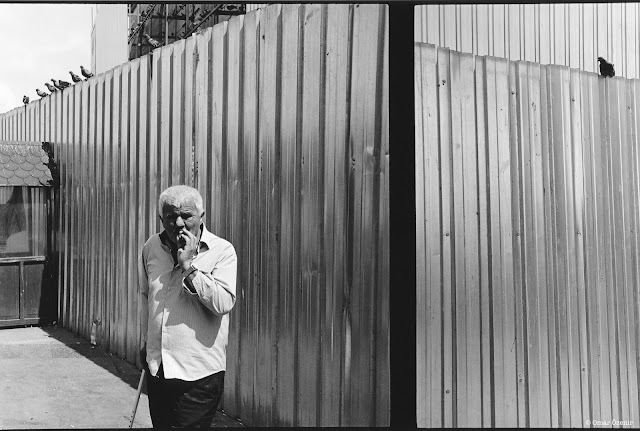Contact sheets might be the best proof that %99 of what we do sucks. Frame after frame it's a hard slap in the face. The vast but unavoidable "waste" to get good pictures is staggering. Yet, they also ruthlessly reveal our shortcomings as photographers, which means they are excellent feedback if we make the effort to listen. We might even see who we really are as a person. "Know thyself" and all that.
But I want to show something with much less gravitas. You might even find it ridiculous. Anyway...the gold mine they are for new "discoveries", whilst going through my contacts for the thousandth time one day last year, I realized that parts of two consecutive frames could work as one picture. An instance where life took a serendipitous turn; where stars mysteriously aligned. After I made a print of that first "discovery" - the top photo - there was no stopping. All of a sudden, I was frantically going through all my contact sheets with a completely different mindset, trying to see a "bigger picture".
 |
| Here I was photographing for a zine where the theme was "Sleep". |
 |
| All prints on Ilford RC Satin paper. |
Needless to say, this is not a novel idea. For example, Gene Smith incorporated part of an adjacent frame into one of his pictures*. Although in that case it wasn't meant to be obvious; he was a journalist after all.
I printed a set of photographs like these and left it at that. Thinking about them now, I feel the end result being completely detached from the photographer's original intent is a problem that can't be simply brushed away. With the word "intent" I mean that which is within the normal photographic frame, i.e. that which the photographer intended to photograph in the first place. So, in the more likely worst case, reframings like these are prone to become a gimmick; but in the best case, I suppose they can become a surrealist's dream.
*Described in an essay by John T. Hill, at the end of the book "W. Eugene Smith - The Camera As Conscience".


